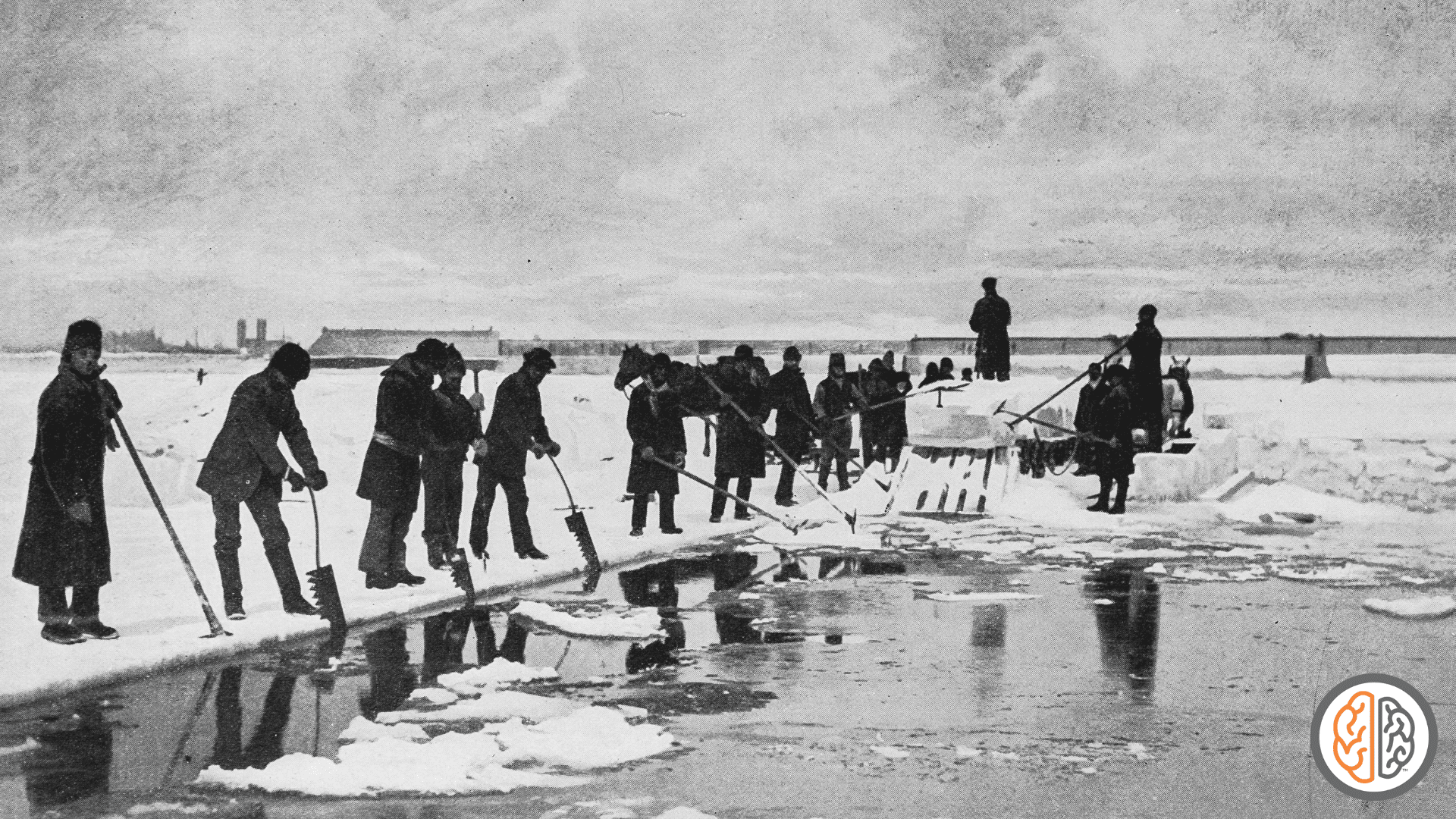Did you know that January and February used to be the boom time for a seasonal crop?
That crop was ICE, and in the 19th and early 20th century (between the development of reliable transportation—i.e., trains—and the invention and spread of mechanical refrigeration), it was a thriving business.
In places that had cold winters and proximity to rail lines, the ice trade revolutionized the meat, vegetable, and fruit industries, making it possible to deliver regional commodities to a much larger geographic area.
While cutting and storing ice for refrigerating purposes was initially an activity of wealthy families who built private ice houses (mainly located in large East Coast cities), it grew into a substantial industry that gave rise to refrigerated rail cars, ships, and long-distance transportation of perishable goods.
Hard, Cold Work
Ice could be harvested as soon as conditions permitted it, but even in a harsh winter it couldn’t start as soon as temperatures fell below freezing because the ice had to be 16-18 inches thick. Ice harvests in Minnesota typically got started near the end of December, and thrived in January and February.
To start the process, ice harvesters used horse-drawn plows to cut a grid on the frozen surface. Men finished separating the blocks and cutting them to their final size using breaker bars and five-foot hand saws.
(If you’ve been forced to watch the movie ‘Frozen,’ you’ve seen the opening scene featuring ice harvesting; the actual method was similar, except it had way more singing.)
Given that a good deal of the ice was going to be lost to melting, the blocks had to start out big (nearly two feet in width and length) to survive transit and storage, but they had to be manageable by human beings, too. These ice blocks could weigh 250-300 pounds!
After they were harvested, ice blocks were transported to an ice house (a building that served to store the ice throughout the year). Insulation was key for these structures, and ice house owners typically used sawdust or straw in thick layers.
One typical example, the Miller Ice Company ice house in Mankato, had sawdust about eight inches around the outside walls, then covered the ice with another layer of sawdust, 10-12 inches thick.
A work crew was in constant motion, raking the sawdust, evening it out, and filling holes when ice blocks were moved out. The method was effective; a well-insulated ice house with ventilation and good drains could keep the blocks of ice cold until the next winter.
Clearly, this was hard, cold work, but the area had a ready supply of farmers who couldn’t work frozen fields, so many of them bolstered their income by working the ice harvest.
A couple of months working the ice field was an excellent Christmas present for many of these families, though it may have been less fun for the people who had to work a night shift (harvest often ran 24 hours a day) in -35° temperatures. After all, that’s the kind of cold that can make steel tools and chains as brittle as glass.
Ice in the Home
Although much of this ice was used to transport meat and produce, there was a substantial home market for ice, too. Hard, crystal-clear ice was typically consumed at the table, while the more porous, white-clouded ice was used by industry.
A Mankato newspaper quoted one harvester in 1895 that “Ice in the Blue Earth river is as clear as any in the state. One year I procured a cake twenty inches thick and could read legal notices through it from a newspaper placed on the other side.”
You might be old enough to remember using an icebox, or have heard a parent or grandparent use the word in reference to the refrigerator. Well, those refrigerator progenitors were just cabinets for storing food, with a smaller area on the top that held the block of harvested ice. The cold air circulated naturally, and the melt was drained off, sometimes into a drip pan beneath the icebox that had to be emptied daily.
Technological Progress
Eventually the horse- and hand-powered harvesting methods gave way to circular saw blades powered by gas engines, but such technological advancements foreshadowed other developments, like mechanical refrigeration. As that spread far and wide in the 1940s, the need for ice harvesting, storage, and transportation melted away.
Clearly we haven’t had to worry about the winter ice harvest for cooling purposes for a long time—these days ice is harvested for winter carnival events like sculpting or building ice castles, and not for practical cooling. But the next time you reach for that container of vanilla ice cream, pause for a moment to remember what it used to take to keep it cold.
SOULO is a full-service marketing and communications agency that helps client partners get the most from their projects through signage, printing, and digital marketing. Ready to get started? Contact us today!






